News
History: Fire Lookout Towers
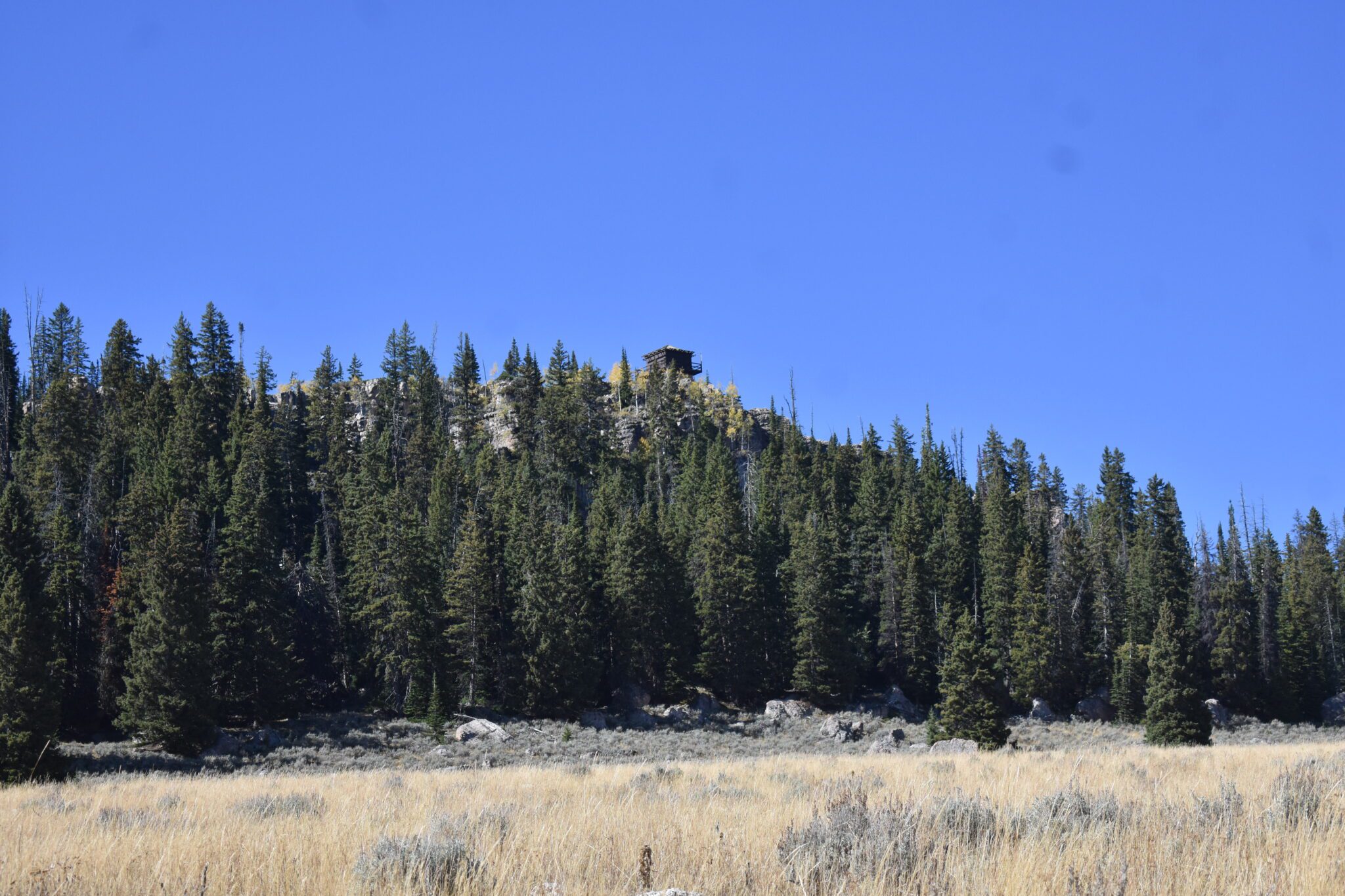
James T. Saban Fire Lookout tower
Before the use of airplanes for locating fires became common, there were Fire Lookouts, such as Sheep Mountain Lookout and High Park, now James T. Saban Lookout, above Buffalo, and Black Mountain Lookout above Sheridan. Saban was a Civil Conservation Corps foreman and former forest ranger who died in the Blackwater Fire in the Shoshone National Forest in August of 1937.
Many fire towers were built during the 1930s by the Civil Conservation Corps, and many towers were manned until the early 1950s. During WWII, fire lookouts did additional duty as enemy aircraft spotters, mainly on the West Coast.

Although the ones in the Big Horn Mountains are no longer manned as fire lookouts, others in Wyoming are still being used. They are located on high mountain peaks, where through the fire season, usually from May through October, fire lookouts live at the tower and scan the forest for smoke. The main reason more are not manned today is because of changes in technology. But that technology can be expensive and is not always reliable.
The life of a fire ranger living in one of the isolated fire lookout towers atop the mountain could be lonely. Often the only sounds were the wind across the rocky mountain top, and through the branches of the pine trees. Magpies, ravens and squirrels might add their calls, and at night there were owls and coyotes yammering, and at one time, possibly even wolf howls.
Fire lookouts offered jobs for women as well. This from The Sheridan Enterprise, September 23, 1921. It not only talks about a woman fire lookout, but also gives a good description of the job and the isolation.
Girl Ex-College Student, Lookout In Medicine Bow National ForestLaramie, Wyo., Sept. 22.— Miss Lorraine Lindsley of Centennial, Wyo, a former student at the University of Wyoming, recently entered upon her duties as observer upon the Medicine Bow peak, as lookout at the highest point occupied by a woman in the Medicine Bow National Forest, if not in the Rocky Mountains. She is the daughter ofA.F. Lindsley, a well-known mining man of the Centennial district. She was born at Cheyenne, but has lived for the last 11 years at Centennial having spent a part of each summer in the mountains at the foot of which the village of Centennial nestles.
She is well suited for and trained to this most necessary, sometimes dangerous, and at all times lonely work, isolated from any neighbor except the summer residents at Brooklyn Lake.
12,005 Feet In Air – This lookout is on the highest point within the Medicine Bow national forest. 12,005 feet above sea level, and within a small glassed-in shelter house, miles away from the nearest mountain resident. Miss Lindsley maintains a constant vigil over the thousands of acres within the forest reserve. Here a stand of 3,500,000,000 feet of timber, valued at $10,000,000 is supported. At the base of the peak, and the protected shelter of the deformed spruce trees commonly found at timber line as the result of constant wind currents which prevent tree growth and allow limbs to grow form but one side of the tree, is a small, one-room, rock cabin, which serves as a home for the lookout observer from early June until late in September.
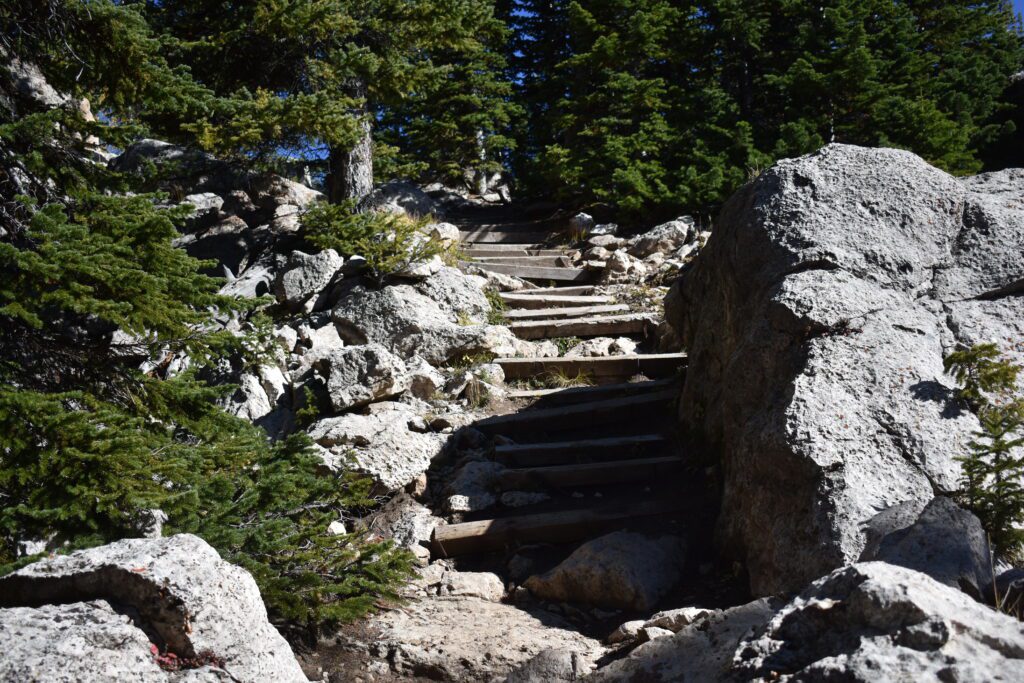
Climbs 1,500 Feet Daily – Early each morning, before the night’s frost has disappeared from the grass blades and rocks, this girl observer begins the climb from her cabin house over boulders, rockslides, and even banks of perpetual snow, for 1,500 feet, over a trail only passable on foot, to her position upon the topmost peak. Here, on the topmost pinnacle of the mountain, from early morning until twilight, with the entire range under view and under direct observation through the use of powerful binoculars, suspicions columns are picked up, reported the forest ranger or supervisor by telephone, and investigations are promptly made to determine the accurate location of the fire, the fire fighters dispatched immediately to the scene before the fires have had opportunity to gain headway.
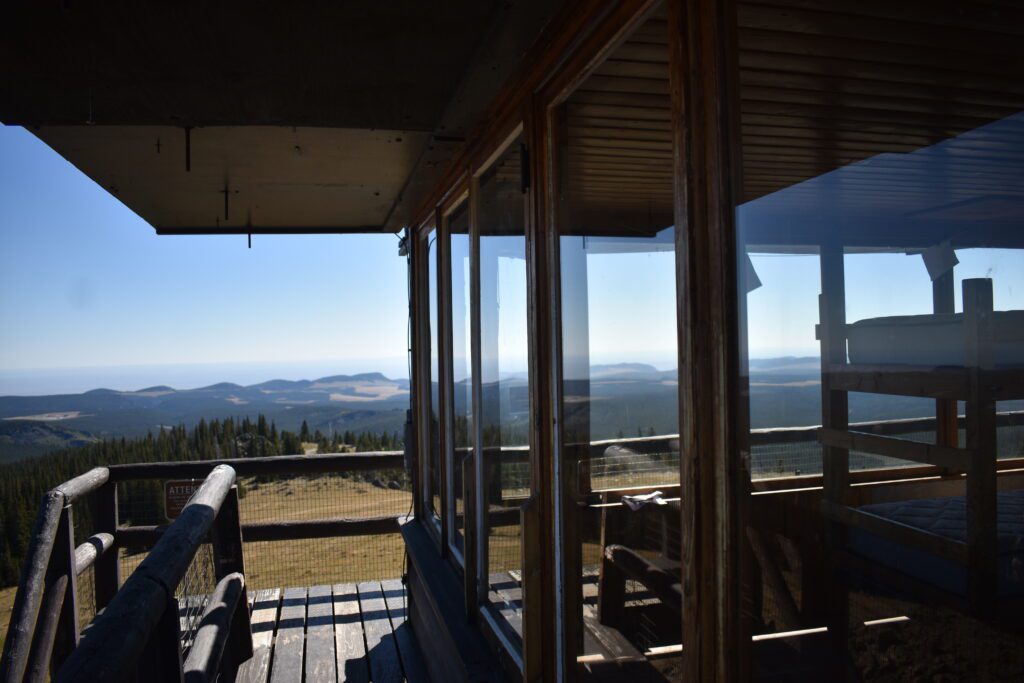
Fire lookouts not only reported fires, but being high above the forest they could see weather moving in as well.
The Daily Boomerang, September 1, 1921 – Heavy Rains Visit Bow Peak Section. Snowstorm is Near Fire Lookout. Lorraine Lindsley stationed on Medicine Bow peak in a communication with the local forestry office this morning reported that heavy rain fell in that section all during last night. This morning a heavy fog descended over the surrounding territory and observations point to probable snow within the next twenty-four.

During a thunderstorm, on the mountain peaks, the lightning cracked, and the thunder sounded like cannon fire. At the High Park Lookout, on the information sign, it said that fire lookouts, “had time for wildlife watching and during summer storms watched spectacular natural ‘fireworks as lightning struck the surrounding peaks.’” The High Park station stood protected by ground points that drained the static electricity from the lookout.
Lindsley held the job for a few months, then the News Letter, Newcastle, October 27, 1921 reports – Miss Lorraine Lindsley of Centennial, who was the fire lookout on Medicine Bow Peak, the highest lookout held by a woman in the United States, which is the primary control point for the Medicine Bow national forest, has resigned her position and will re-enter the University of Wyoming.
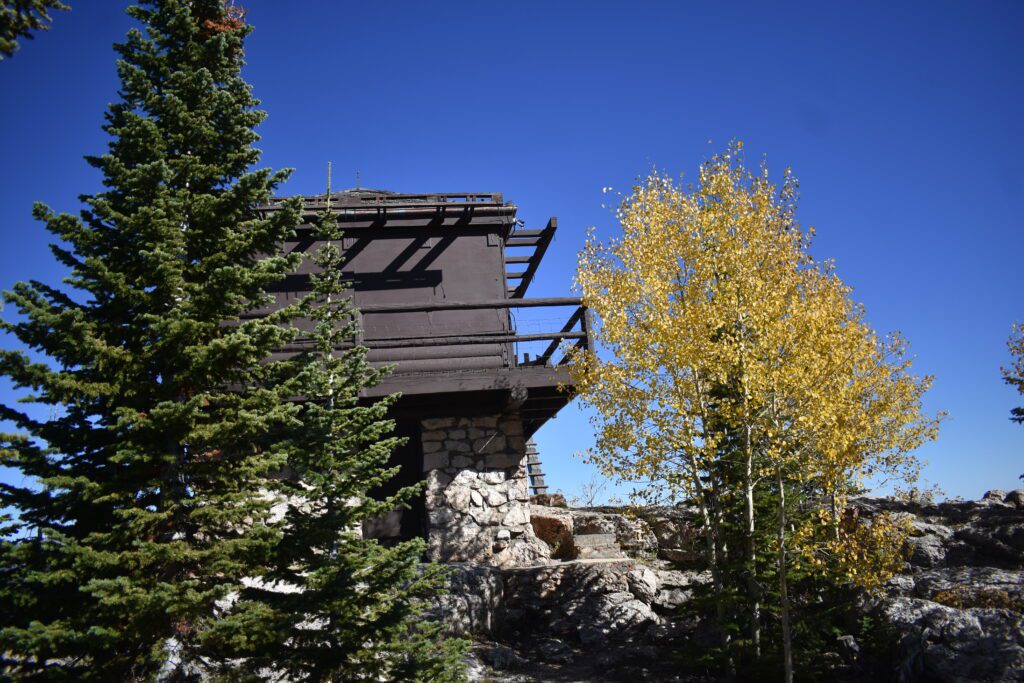
Fire towers were important in the Wyoming Black Hills as well, and the Bear Mountain Fire Lookout is still being manned today.
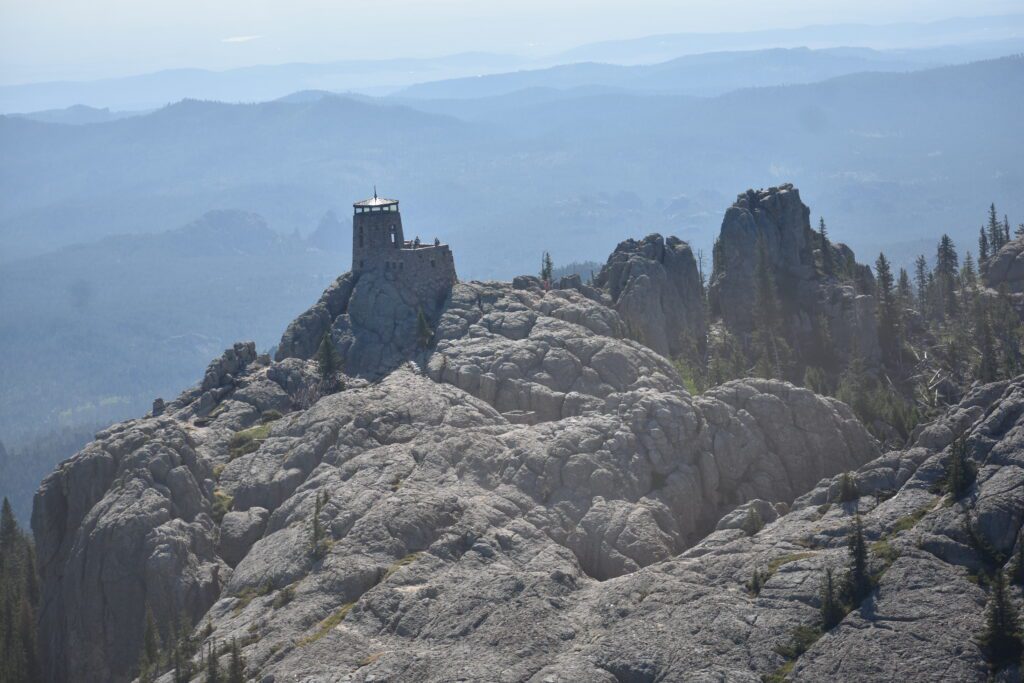
This from The Times, Sundance, September 10, 1919 – George R. Shrader, in charge of the Cement Ridge fire lookout station of the forest service, was in the city yesterday – Cement Ridge commands a, very good general view of at least the west half of the Black Hills and the greater part of the Bear Lodge range, and many incipient forest fires have; been discovered from the time to avert one of great destruction.
And from The Crook County Monitor, January 3, 1913 – Forest Supervisor Knowels has kindly furnished this office with information regarding some of the work done on the Sundance reserve the past year and also figures on net results; which we are pleased to give below. There were fifteen fires on the Sundance National Forest during the past season. The areas burned over amounted to sixty-five acres and an estimated damage of $1,011was sustained.
The total cost of extinguishing these fires was $1,008.34. This includes forest rangers’ time. The average fire for the year burned four and three-fourths acres with an average damage of $56.17. A forest guard was stationed at Cement Ridge lookout station where a cabin has been built, connected by forest service telephone with the ranger’s headquarters and the supervisor’s office. This lookout discovered thirteen of the fifteen fires that occurred during the summer. The lookout system surpassed the expectations of the forest officials in its efficiency. It enabled them to get men and tools to all fires before any of them gained sufficient headway to make them serious

Forest fire prevention is better than putting one out a fire after it has started to burn. This from The Riverton Review, July 20, 1921 – Forest Service Taking No Chances There will be plenty of fires later in the year, state the forestry men. Lightning will set some, and campers, motorists railroads. picnickers, and brush burners a good many more. The Forest Service is not taking any chances, however, for its 3,000 smoke chasers, fire lookouts, ranger and supervisors are all “on their toes’ to put into motion, at a moment’s notice the big fire-fighting machinery they have developed.
Eighty per cent of the forest fires that occurred in the United States during the past five years were due to human carelessness. A campfire left burning, a lighted match or cigarette butt thoughtlessly thrown aside, the foresters say often cause conflagrations that take days and weeks of hard work to suppress it is for this reason that they ask every good citizen to adopt as a part of his daily creed the motto of the Forest Service Put Out, Keep Out Forest Fires.

And for one year’s fire protection week, people were asked to suggest slogans to use for advertising. The Laramie Boomerang, May 18, 1921 – Slogans Adopted For Forest Fire Protection Week In preparation of forest protection week which will be observed in Laramie and elsewhere next week these fire slogans and verses are submitted by the committee with the suggestion that they may be used to advantage during Forest Protection Week by four-minute speakers, in newspapers, in display headlines and incorporated in some of the advertisements of the regular advertising firms.
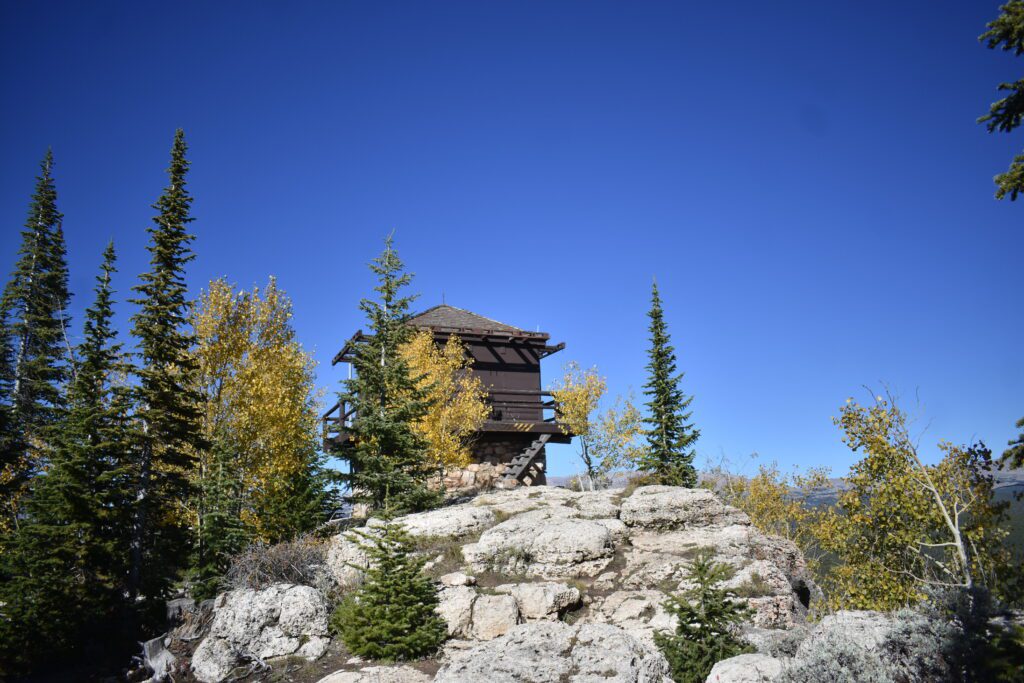
Here are some of the many slogans that were submitted.
Fires Deplete the Nations Wealth; Forest Fires Mean Less Lumber; Forest Fires Mean Burned Playgrounds for our Children; On Your Decoration Day Trip To The Hills, Do Not Scar Nature’s Beauty by Carelessness; Enjoy Yourself In The Mountains And Let Future Generations Do The Same- Be Careful With Fire; Famine Follows Forest Fire. “Lovely As A Tree” was Not Written By Joyes Kilmer About A Graveyard of Fire Snags; If You Want Your Friends To Enjoy the Scenery Don’t Hide it With a Curtain of Smoke; He Who Fires And Runs Away Will Live To Pay A Fine Next Day; Don’t Start Anything You Can’t Finish—Fires In The Mountains; No Room In The Woods Mr. “Dldn’t-Know-It-Was-Loaded” Or His Brother Mr. “Didn’t-Know-It Would Burn; Do Not Waste Timber, Grass, Beauty, Fishing, Hunting Be Careful With Fire; Be Sure your Camp Fire Is Dead —Then Bury It; Lightning And Men Start Forest Fires—The Lightning Can’t Help It; Fires In The Mountains Means Poverty In The Valleys; There is More Honor In Preventing A Forest Fire Than In Putting It Out.
Today, there are still fire stations you can visit, Sheep Mountain can be accessed by a four-wheel drive vehicle, but the John Saban Lookout and the Black Mountain Lookout require a hike to get close. One wonders how the lookouts packed in supplies to some of these fire lookouts, as the trail is steep, rocky and narrow in many places.
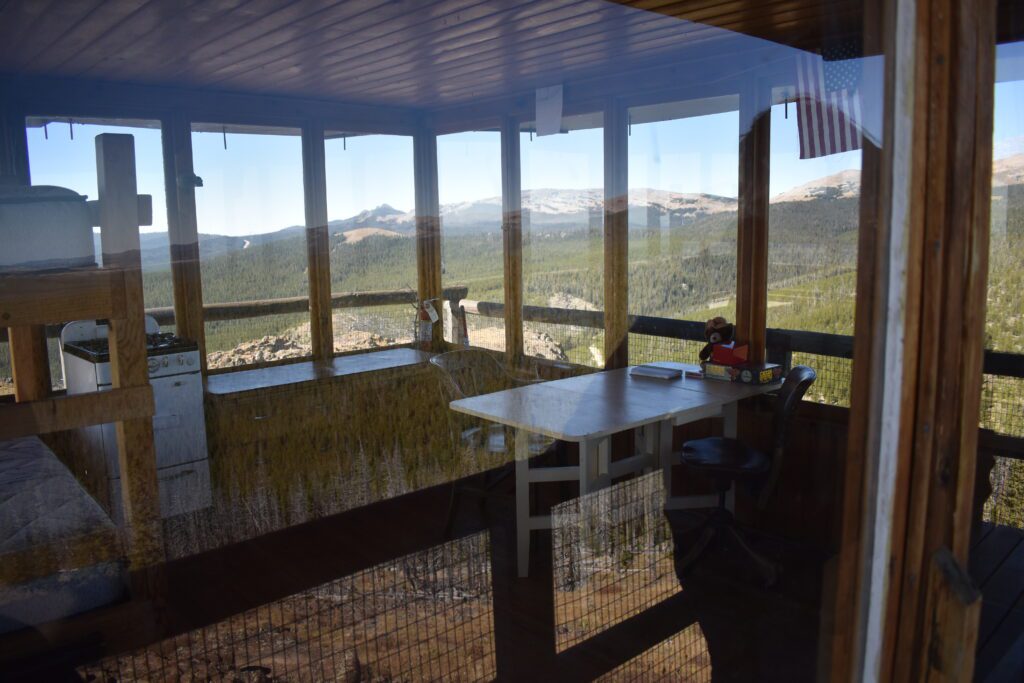
There are some fire lookouts in Wyoming that people can book for overnight stays. Spruce Mountain Lookout in the Medicine Bow National Forest and Sheep Mountain Lookout in the Bighorn National Forest above Buffalo are two that allow summer tourists.
According to the information provided by the Bighorn National Forest, guests at Sheep Mountain should be prepared for high winds and temperatures between 30 degrees and night to 70 degrees during the day. It is available, depending on weather, from mid-June to mid-November. In 2023 the cost was $50 a night and amenities are few. They add that view of the night sky is worth every penny.


Carrie Poff
October 5, 2024 at 11:54 am
When did the Forest Service stop manning these towers?